DATELINE – April thru June 2023
The project documented in this article is a little different from most of those we do for this web site. For this effort, we excused ourselves from our normal, self-imposed, coverage area around Dallas/Fort Worth, and instead we traveled far to the west of the metroplex… almost into the Texas panhandle. In this case, the wildlife we observed was neither DFW, nor was it urban. In fact, this situation was about as rural as can be imagined.
Early this past April and far afield in west Texas, we had the good fortune of discovering a pair of Great Horned Owls nesting in an old derelict fireplace–the only thing left standing after a remote rural homestead burned to the ground many years ago. The brick fireplace that remained created a perfect nesting site for the owls, demonstrating once again that even in the most rural areas, wildlife will look to human built structures to use as shelters, dens, and nesting sites. It turns out that animals prefer human constructions for the same reason people do–they are better, sturdier, safer, and more reliable than most of the alternatives offered by nature.
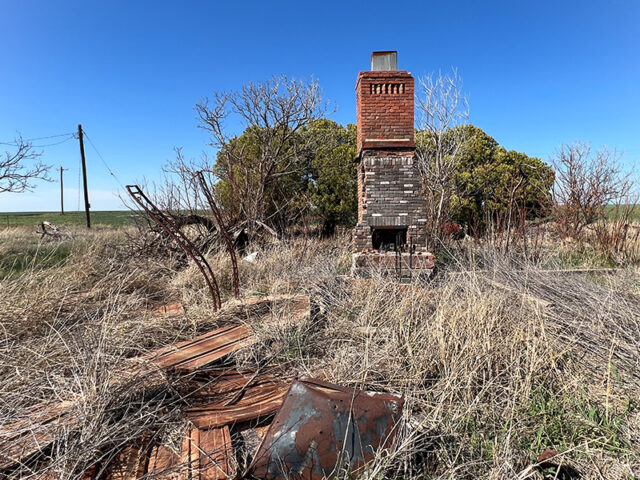
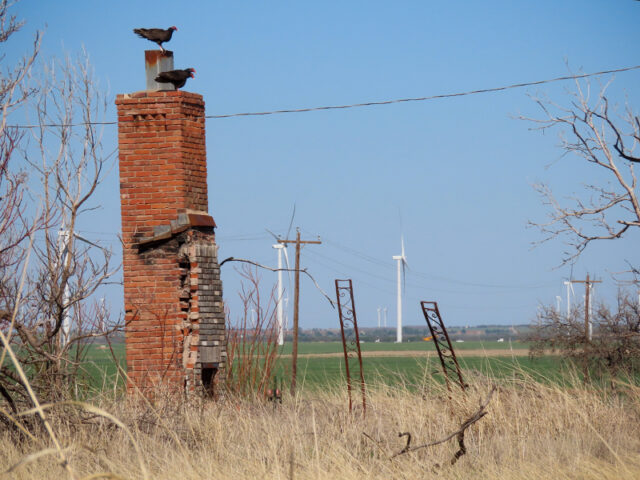
Notice the wind turbines in the distance
This part of Texas strikes you immediately with its immensity. Out here, the eye can see for as far as the eye can see, or so they say. The uninterrupted flatness of the land is astonishing. All around us, in every direction, stretched miles and miles of agricultural land in various states of use. Some was plowed, some was growing, some was harvested, and some was feral–altogether the landscape impressed with a wonderful palette of vivid reds, greens and yellows. Far in the distance, row after row of soldierly white turbines could be seen slowly turning in the warm springtime breeze. Above it all was a colossal and beautiful blue sky, full of large, billowy clouds. When people talk about “big sky” this is the kind of thing they are referring to.
We discovered the nest site through pure serendipity. We were traveling in this part of Texas on other business, when we noticed the derelict chimney from the highway as we passed by. Curious about this odd find, we made a spontaneous decision to stop briefly for a closer look. As we exited the car and approached the chimney, we were surprised when a large owl flushed from inside and landed on a utility pole just a short distance away. Intrigued, we peeked inside the brick fireplace, and were pleased to find two large white eggs tucked in the back corner.
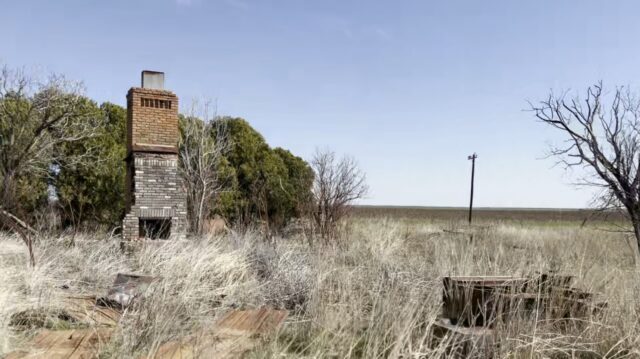
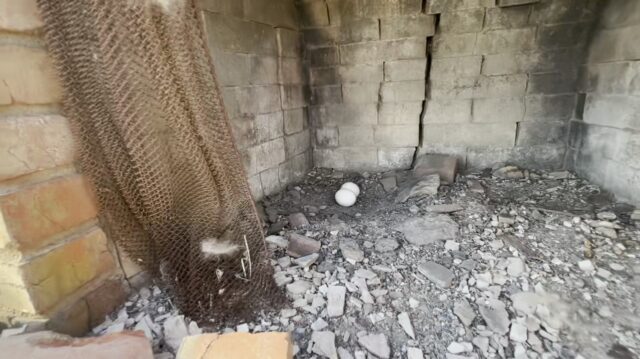
Great Horned Owls are know to nest in a wide variety of places. According to the literature, these owl do not build their own nests. Instead, they are inclined to take over nests built by other large birds, or alternatively they will make use of suitable cavities or ledges. Great Horned Owls have also been know to nest on the ground in some habitats where other options are in short supply.
The fireplace nest is unique in my limited experience. Over the years I have discovered a number of Great Horned Owls nesting in and around DFW, and each situation was different from the others. In one example, I found owls nesting in the midst of a Great Blue Heron rookery–they had clearly usurped an existing heron nest. Another time I observed a pair of owls making use of a nest constructed in the arm of a transmission tower. These owls were time-sharing the nest seasonally with a pair of Red-tailed Hawks, who likely built the nest originally. I’ve also observed Great Horned Owls nesting under roadway bridges, and on the supporting structures of railroad trestles. But finding them nesting in a fireplace–just a couple of feet above ground level–was a first for me.
Right away we agreed that this was too good of an opportunity to pass up. As luck would have it, I had a couple of trail cameras tucked in my pack, and we decided that a makeshift camera trap was called for here. I quickly set up the trail cameras, and then we beat a hasty retreat–we did not want to unduly disturb the owl or the nest. We stayed in the car just long enough to be sure the big female owl would return to the nest, and once she did, we were back on the road again.
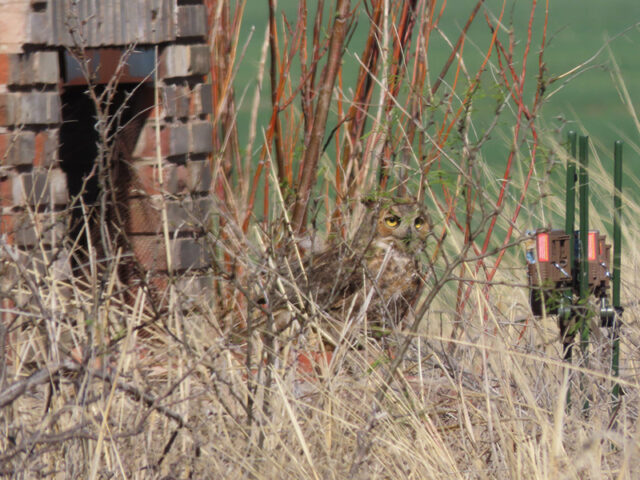
Our plan would be to return and retrieve the cameras at the end of the three months or so it would take for the eggs to hatch and the owlets to fledge. In the meanwhile, the trail cameras would be left to record pictures and videos for weeks on ends here in this lonely and remote place.
When the date to collect the trail cameras finally arrived toward the end of June, we were very eager and excited to get back out to the derelict chimney to see what had kind of shots had been recorded. We made the long, three hour drive out on another beautiful–but much warmer–summer day. When we arrived on site, we soon noted the two nearly grown owlets perched on a nearby utility line, both still under the watchful eye of their mother who sat atop a tree just adjacent to the old homestead. The owls were finished with the nest for this season, so we were able to quickly move in and collect the cameras without disturbing them.
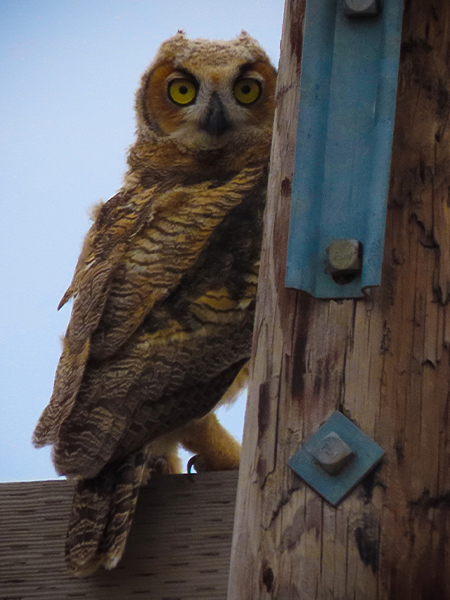
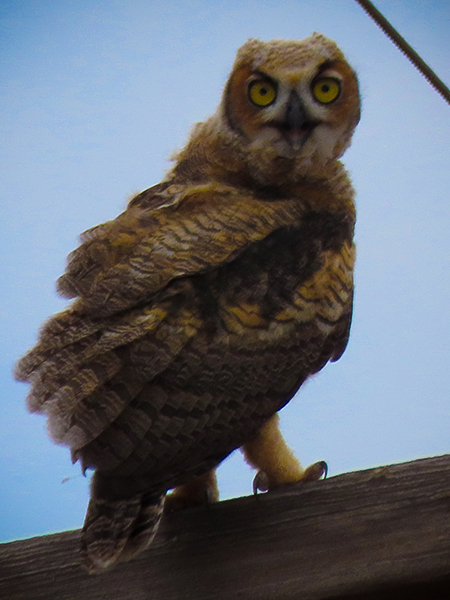
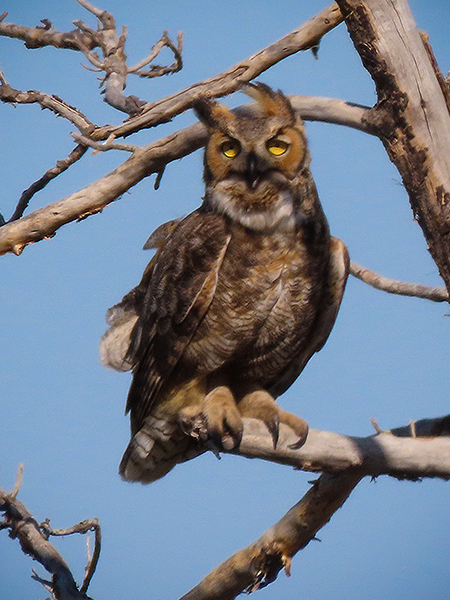
Back inside the car I did a quick review of the recordings. I could see right away that hundreds of images and videos had been recorded. I took a closer look at a few of the more interesting shots, and could tell that at least some of the footage we recorded was going to be pretty special. We headed for home late in the afternoon, eager to have a better look at the footage on the larger computer screen at home.
I stayed up late that night to review and sort through all of the footage that had been recorded. And while we did get some really amazing shots, it turns the project did not produce as well as I had hoped. When we made the hasty decision to set the trail cameras on those barren plains, we did the best we could under the circumstances, but we neglected to consider the strength and frequency of the winds in that part of the state. Over the first few weeks, powerful winds whipped and shook the cameras relentlessly. The trail camera’s electronics mistook their own wind-induced shaking for wildlife movement, and they triggered frequently as a result.
Within a short time the memory cards were full, and the picture taking stopped. As a consequence, we only recorded pictures of the owlets for a couple of weeks after they hatched, and that is all. We did not get images and videos of the entire process–from hatching to fledging–as intended. In addition, the cameras were placed a little too close to the nest. As the Owlets grew larger and moved to the front of the fireplace, they would have been in a part of the camera’s field-of-view where the focus would be off and the resulting images would have been blurry. You can see hints of this potential problem in the pictures of the adult owls leaving and returning to the nest.
Still, much of the footage we did record is compelling and worth sharing. Further, it was a good learning opportunity–especially with regards to the technical issues involved in a shoot like this. We should be able to do better next time! Great Horn Owls often reuse a sturdy and successful nest site like this one year after year. Next season, we may give this another go, setting up a bit earlier (before the owls arrive) and taking the strong west Texas wind into account. Sturdier camera mounts and some configuration fine tuning will hopefully allow us to record for a longer period of time, which in turn will permit us insight into many more of the intimate details about how Great Horned Owls rear their young!
In the meanwhile, please enjoy the brief photo-essay with pictures from this project below…
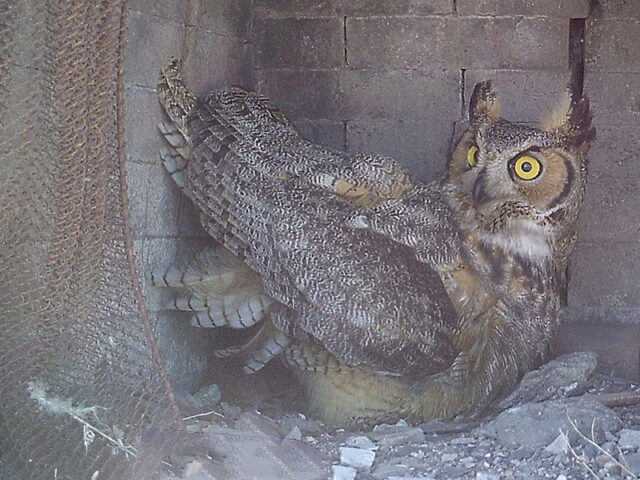
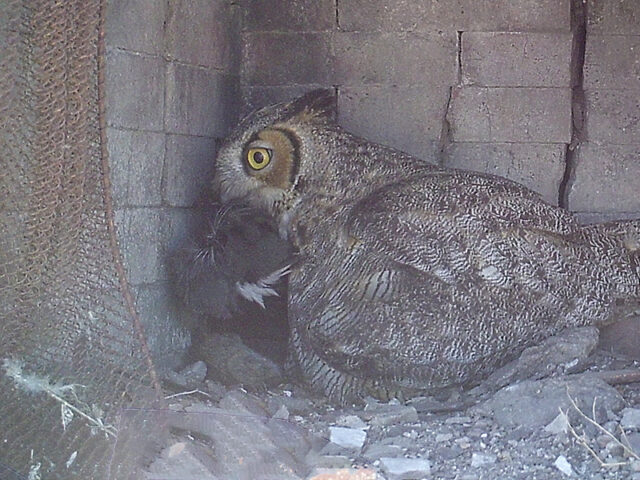
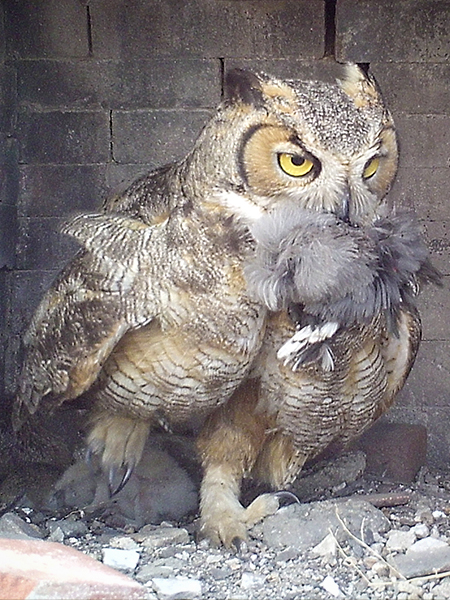
Note the little white owlets behind mom
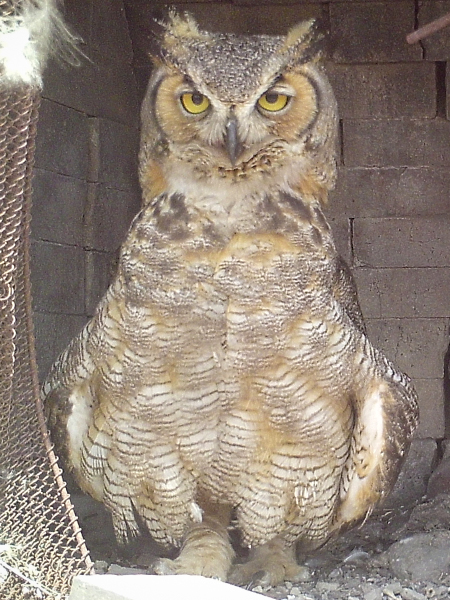
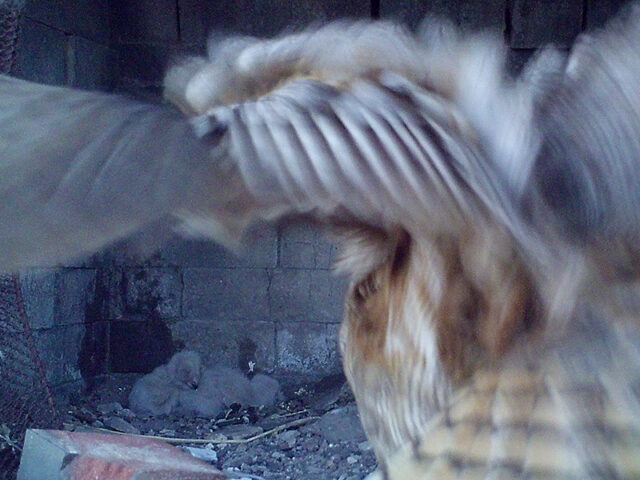
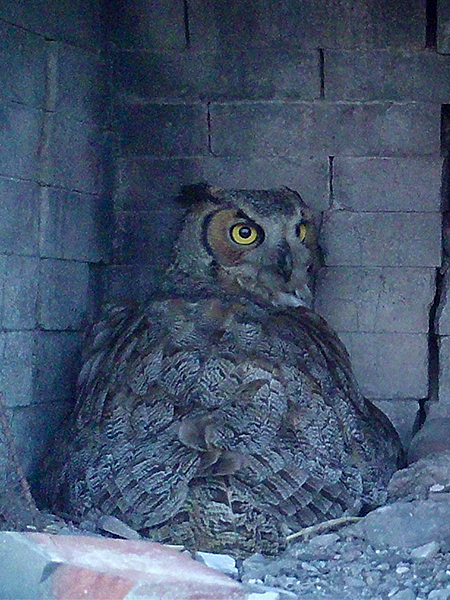
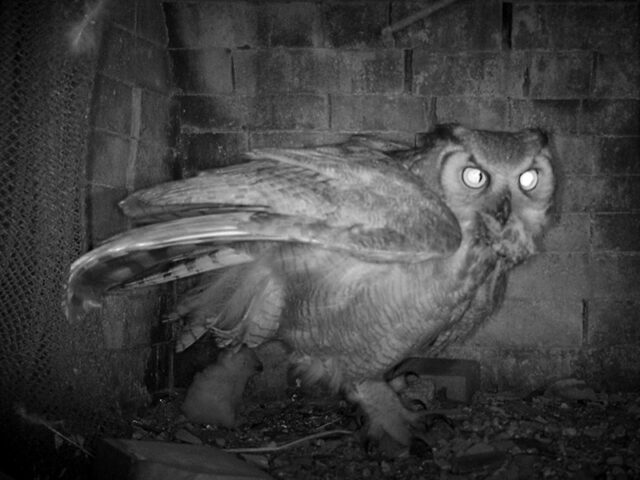

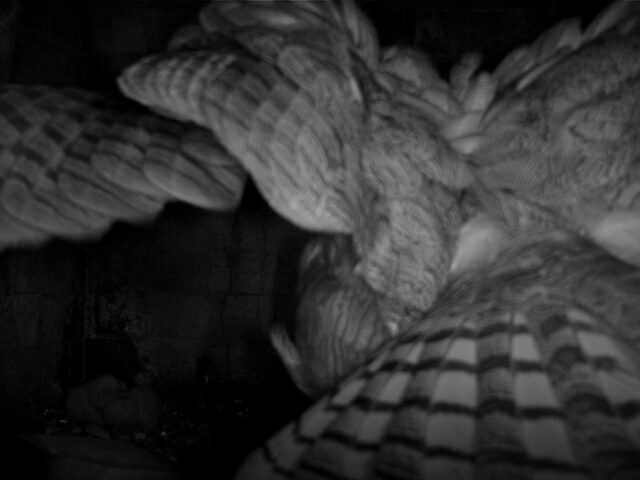
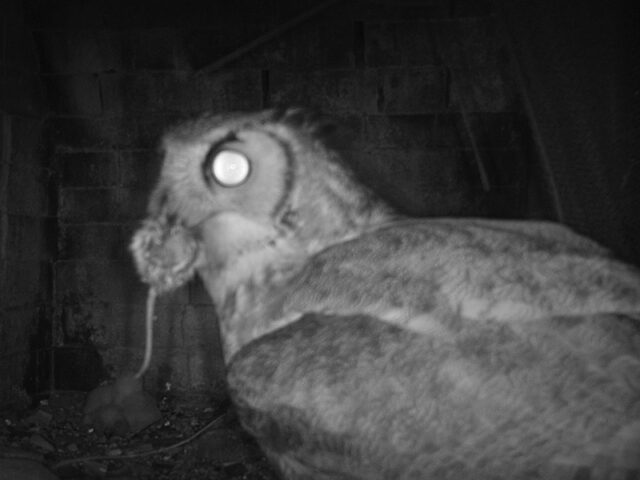
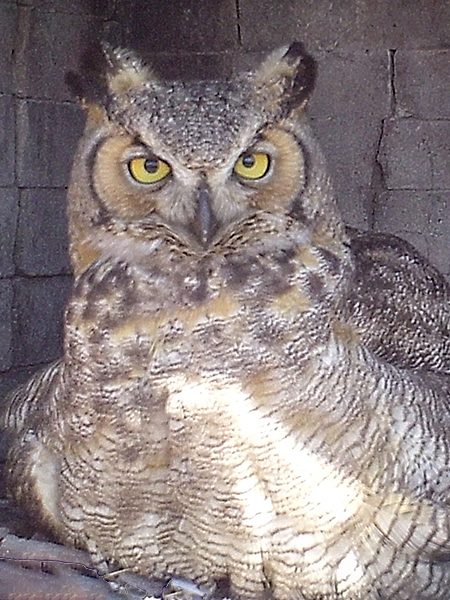
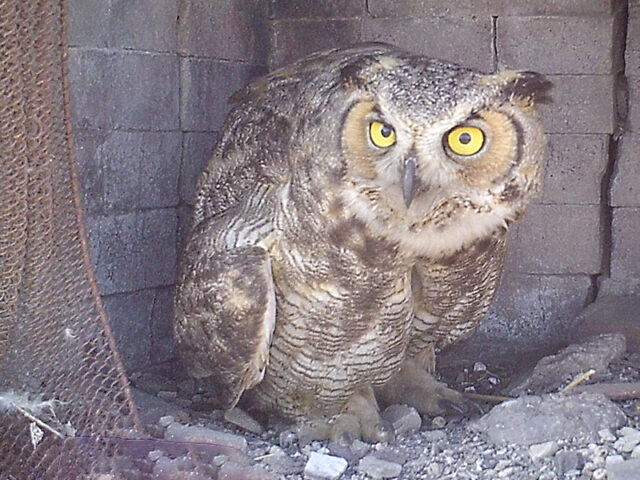
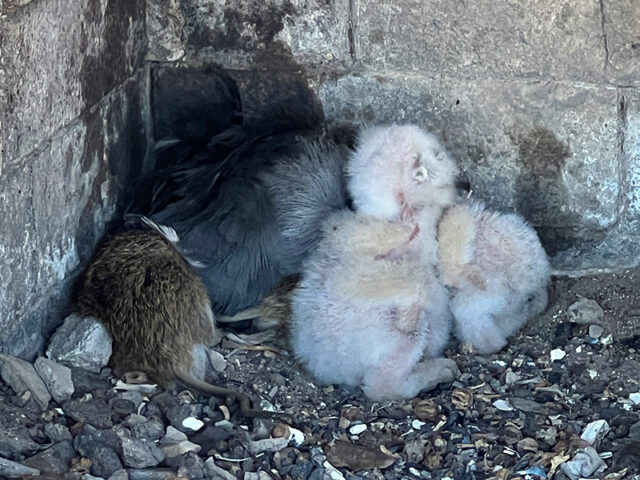
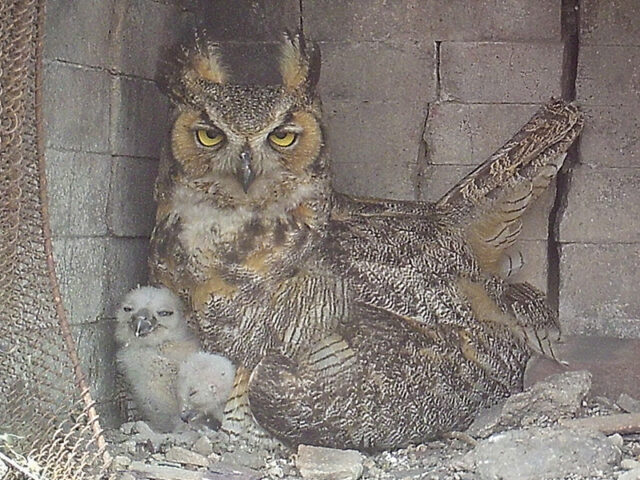
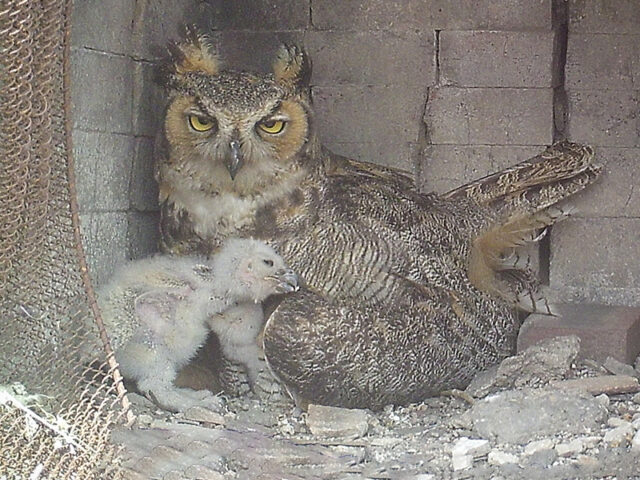
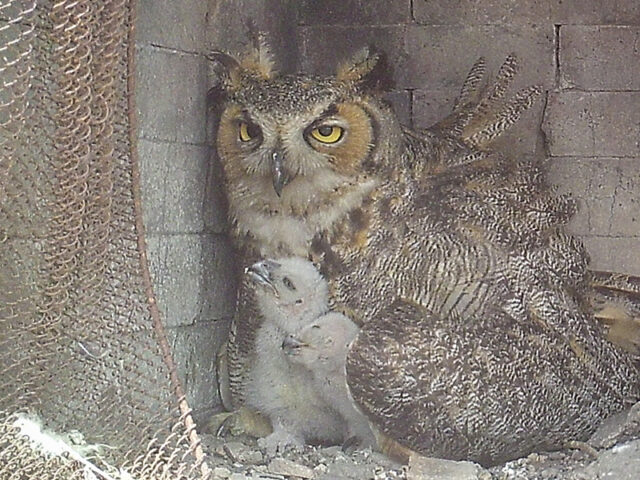
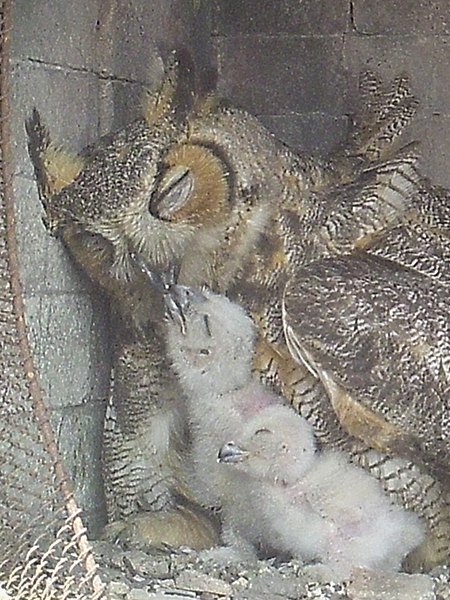
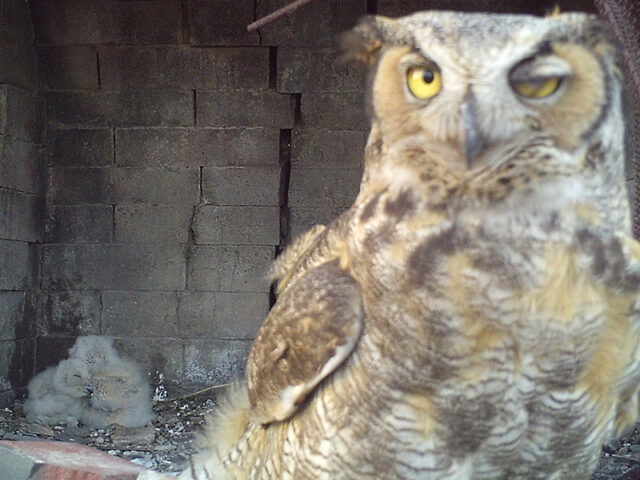
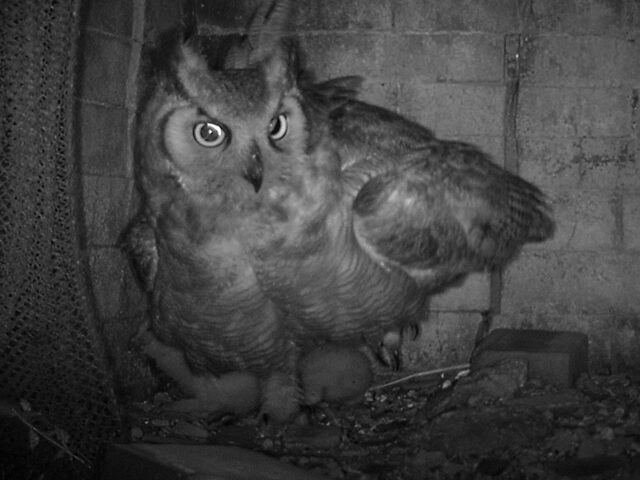
He likely has food!
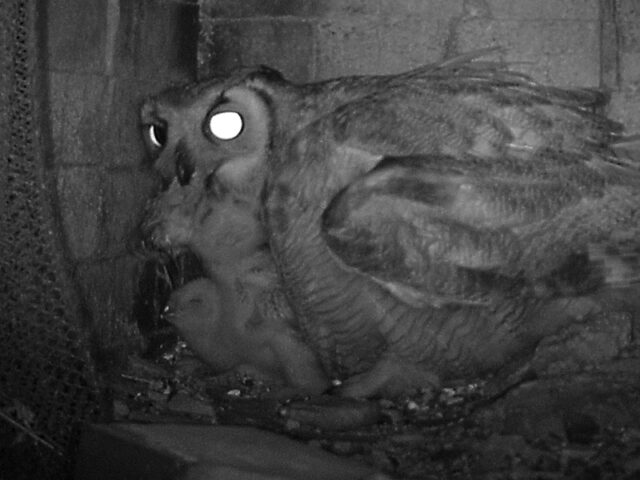
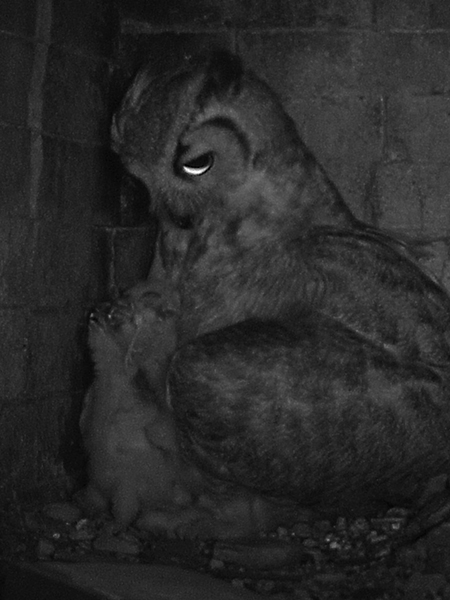
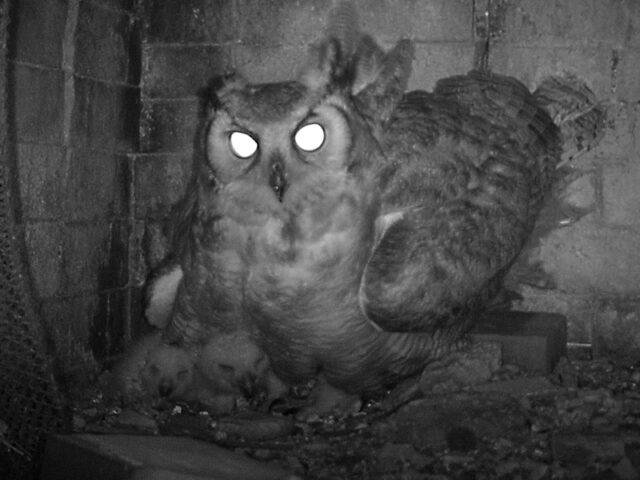
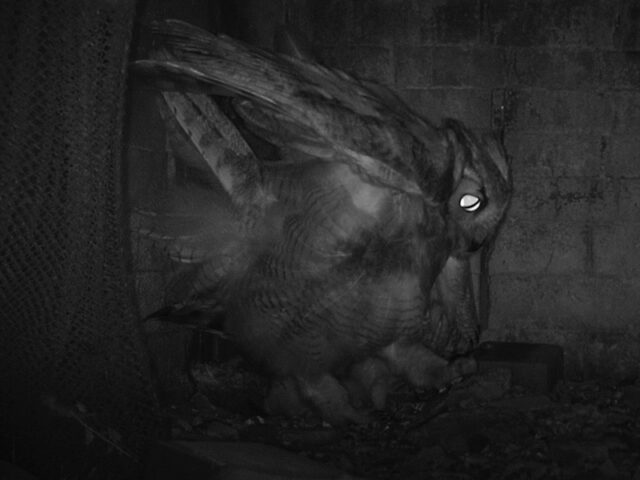
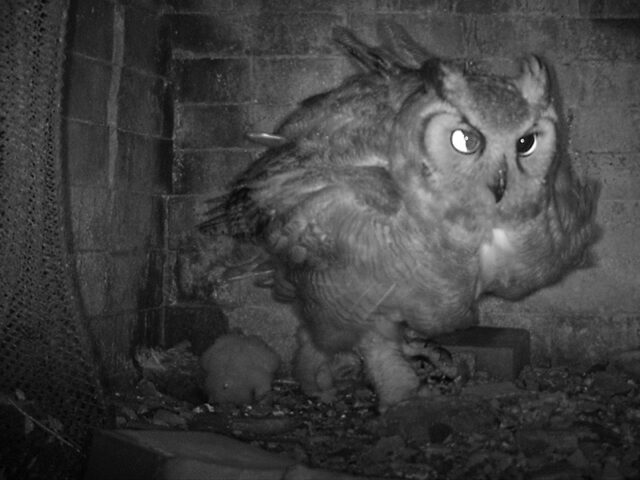
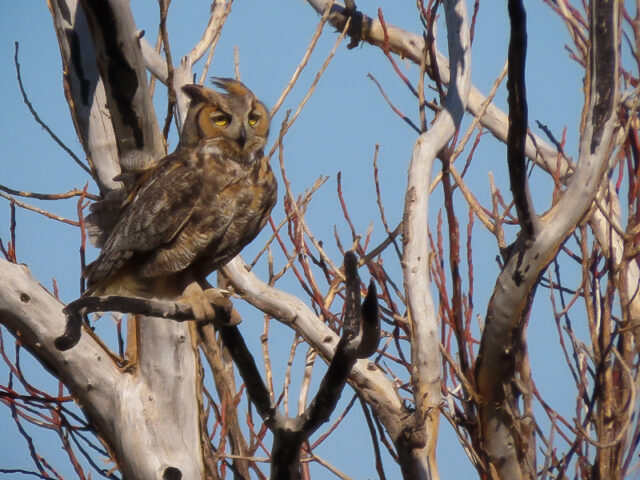
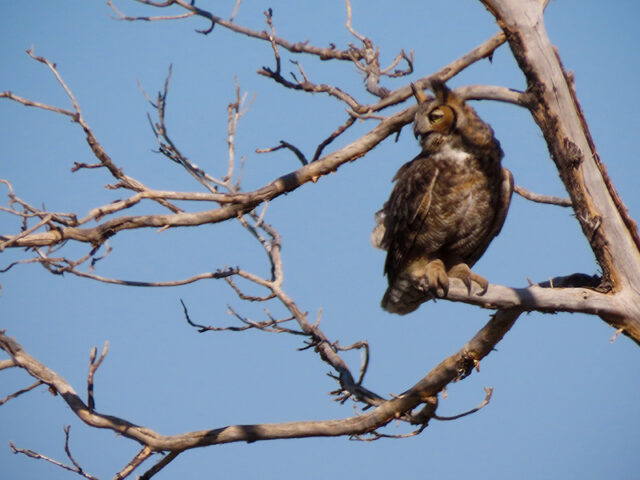


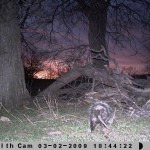
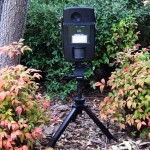
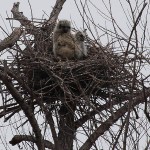
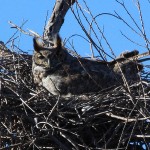
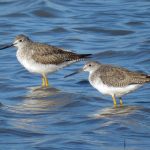
Love the pictures. I love owls!
I would like to share a photo of two Great Horned Owls that visited the farm two nights ago. Summerfield Florida.